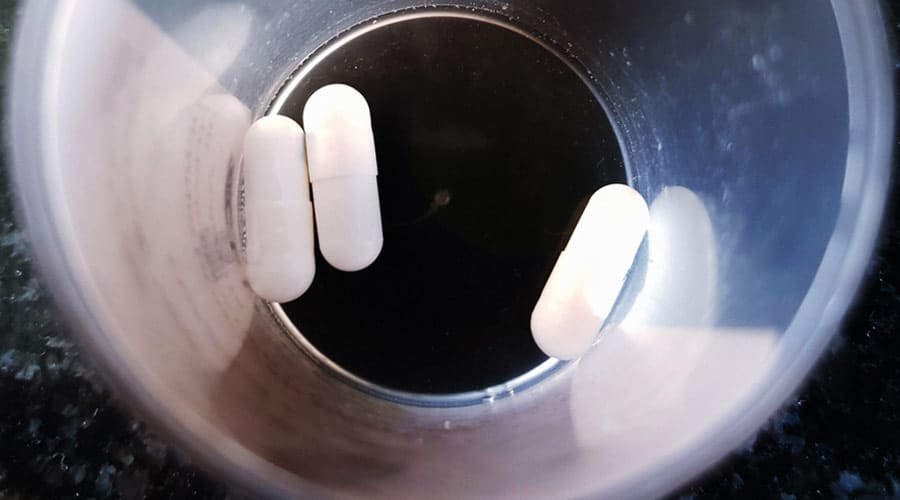
Why is it happening and what is being done to course correct
Nurses and other health providers have dealt with a dizzying array of drug shortages since the late 1990’s.4 The shortages have ranged from inconvenient when specific bags of fluids proved scarce or at times, downright dangerous when pain medications and/or chemotherapy remained in short supply. We’ve heard disparate theories for the shortages, whether it could be hurricanes in Puerto Rico, or manufacturing issues in mainland U.S., but as it turns out, no one really has an answer for the continuing and perplexing problem.
When I encountered my own problem with a drug shortage in the early Spring of 2019, I decided to research the topic more thoroughly, not just as a professional, but also as a consumer. When you depend on medication for everyday health, it is frightening to receive a phone call the day before an infusion warning you that the medication is no longer available due to a national shortage, and that no one knows precisely when or if the drug will become available again. Of course, as a patient, you’re provided with instructions to call your physician for further information, but as a nurse, you wonder.
How does this happen? How can this possibly be safe? Why was there no warning?
As I learned, drug shortages are common in the United States and have been for at least the last decade. According to a national survey of 719 hospital pharmacy managers and pharmacy leaders (PPM’s), every respondent reported experiencing shortages in 2019. Of those surveyed, “69.2% reported experiencing more than 50 shortages.” As a result, medication hoarding was reported by 81.3% of the respondents, which, as you can imagine, drives up medical costs across the board.
Since 2007, drug shortages have totaled more than 100 per annum, with the peak occurring in 2011. The Drug Information Service at the University of Utah believes 2011 to be the nation’s peak with over 267 shortages reported for that year. Reasons listed by the University include manufacturing issues, supply/demand, natural disasters (e.g. hurricanes, wildfires), lack of raw materials, abrupt discontinuation of a drug (or a generic), and the biggest category, “unknown”.1
It has long been speculated that drug manufacturers lose interest in older, less pricey drugs and intentionally stop supplying them in favor of newer, more expensive medicines unless there are additional motivating factors involved. This was partly supported when Seconal (Secobarbital) was purchased by Valeant pharmaceuticals just one month after California’s right to die laws were proposed. Surprisingly, the price of the medication soared to $30 per capsule, although it had previously been marketed at just $2 per pill. Patients with meager funds who were planning to end their lives were shocked to find the price of the final prescription kits had skyrocketed, seemingly overnight!2
The opioid factor
Another issue compounding drug shortages is the opioid crisis. Restrictions on opioids and opioid-like medications (resulting from actions by the DEA) have resulted in intermittent drug shortages, as the DEA responds to the wave of opioid overdoses sweeping the country resulting in restrictions placed on injectable opioids, such as fentanyl, hydromorphone, and morphine. Although the “DEA did raise production quotas in 2018”, intermittent shortages continue with production issues from manufacturers, placing a burden on hospitals and trauma centers across the United States.5
Drug shortage notifications
While providers may see drug shortages as inconvenient, the truth is, they can be dangerous, as time is consumed attempting to provide treatment without compromising care or making dosage errors with alternate medications. Lack of advance notice and poor planning is a frequent problem, which may lead to rationing of medication or inadequate substitutions. Manufacturers are only required by law to give the FDA six months’ notice if they plan to stop manufacturing a single-source, medically necessary drug. However, this has been criticized as being overly “soft” by professionals, since the definition of “medically necessary” is loosely defined.3
In this scenario, the manufacturer has the leeway to determine if notification is even necessary, which could leave hospitals and pharmacies scrambling for alternatives.2
When a drug is no longer available, it can be heartbreaking for patients. Imagine for a moment that you are an epileptic patient stable on a specific medication (and dosage) to control grand mal seizures, but that medication depends on a supply chain from foreign exports (as 80% of our raw pharmaceutical materials do). Your physician and pharmacist must try to determine what medication will suffice until the suppliers from Europe, India, or China amicably end their trade dispute and the medication of choice becomes available. You wait and pray that no breakthrough seizures occur while the new medication(s) are trialed. You avoid the media, fearing you will hear alarming news about A) anything related to ongoing trade negotiations or B) anything further about a young Disney celebrity who recently died in his sleep of a grand mal seizure.
Hopefully, you are not a patient with grand mal seizures, but instead, you’re the nurse hearing about these specific drug shortages, and they’re heartbreaking. It’s yet another drug your patients need for medical necessity, and the shortage doesn’t end. If you are lucky, your patients do well on a new medication; and they are stable.2
What happens when it is personal?
Unfortunately, by the Spring of 2019, it’s another shortage altogether. This time the cause is also known. It’s not a trade negotiation, it’s a shortage of raw materials and on the morning of May 27th, the phone rings and this time it IS my turn to experience a drug in short supply. There is no IVIG (immunoglobulin) to treat my autoimmune disease this month. As I hang up the phone, I am fearful. What happens to me now, I wonder?
What happens to others like me? We have been instructed to contact our physicians. How many others, I wonder, feel frightened and alone? How many will feel abandoned by a system they expect to provide for them when they need assistance? How many patients worry they will grow ill before a substitute becomes available?6
Unfortunately, we have reason to be concerned. The shortage has lasted eight weeks and is not expected to lift anytime soon. Immunoglobulin is being rationed for those who need it most. I have received one infusion, but infusions are being titrated according to new algorithms, and patients are being monitored closely for adverse effects of autoimmune disease. I have had difficulties, mourning for the strength I had so carefully preserved in previous months, hoping for gains in the not-too-distant future as plasma supplies improve. The nurse in me strives for positivity, the patient in me fights to quell anxiety. It is a difficulty I can talk myself through and I have to believe.
Less fortunately, it is likely drug shortages will continue in the United States, and it is probable I will not be alone in facing this specter in years ahead. Whether it be antibiotics, pain medication, IV fluids, chemotherapy, or additional medically necessary agents for the treatment of those who require prescription therapy, we will continue to face challenges related to procuring a steady supply chain of pharmaceuticals.
Unfortunately, although many causes have been sited for drug shortages, the most common cause stated (51%) is unknown, which hardly provides clarity to the professional or the consumer. It doesn’t light the way to a foolproof plan for remedying the situation.2
What is being done?
In July of 2018, the FDA established the Drug Shortages Task Force to begin tracking root causes of shortages, to develop long-term strategies to prevent future episodes, which may include incentivizing stakeholders to manufacture critical drugs, including those on the lower end of the pricing spectrum. While the FDA cannot force those manufacturing products to continue making items that are no longer profitable or to manufacture items when raw materials are not readily available, they can work with stakeholders to assure that time is spent notifying hospitals, pharmacists, and physicians when essential drugs are going offline, so that substitutes and/or generics might be ordered in the interim, thus preventing a few of the more urgent crises we have witnessed.
If even a few more patients could miss getting the phone call I received, their time and efforts will be well spent!3
References
- Clinicaladvisor.com “Survey finds drug shortages rampant in the U.S.: FDA unveils plan.” Greenhalgh, T., April 4, 2019.
- Ncbi.nim.nih.gov. “The drug shortage crisis in the United States.” Ventola, C. Lee, October 3, 2011.
- Pharmacytimes.com “Drug shortages: contributing factors, mitigating the impact.” Malacos, K. March 21, 2019.
- Theconversation.com “Drug shortages pose a public health crisis in the U.S.” Hoffman, Sharona June 18, 2018.
- Thescientist.com “Accessing drugs for medical aid-in-dying.” Offord, C. august 16, 2017.
- Wsj.com “Drug shortage leaves patients without immune-disorder treatment.” Loftus, P. August 9, 2019.






